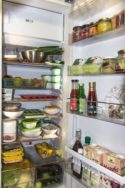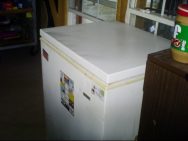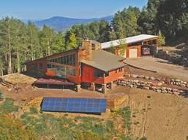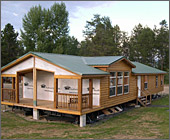
EcoSolarCool new Solar Refrigeration
EcoSolarCool have kick-started 2017 with the release of two new Solar Refrigeration models. The new additions to the upright product line aim to minimise the daily power consumption of cooling appliances. Refrigerators are one of the most energy consuming appliances in the home, accounting for up to 25% of household energy cost. EcoSolarCool want to change this, “providing constant, reliable and energy efficient cooling at great value.”
Two New Models
Both of EcoSolarCool’s new models are approved by UL250 and CSA to US and Canadian standards. These are the only solar refrigerators in the world to hold this approval. Plus this is for the whole unit and not just the compressor. Both models have the most up to date and advanced Danfoss DC compressor and are manufactured in Europe. The power consumption for the models is also at a record low for the solar/DC appliances industry at 201 kWh per annum! This is also amongst the lowest in the AC refrigeration appliances market.
The ESCR260GE Metallic Grey model has a total capacity of 260 litres (9.2 cubic feet). The refrigeration compartment is larger in comparison to the freezer compartment at 235 litres (8.3 cubic feet) to 25 litres (0.9 cubic feet). The freezer is located at the top of the unit and the refrigeration compartment at the bottom. This model weighs in at 121.3 lb (55kg) and is 23.7 x 25.2 x 57.1 inches.
The ESCR355GE Stainless Steel model has a total capacity of 354 litres (12.5 cubic feet). The larger refrigeration compartment (258 litres/9.1 cubic feet) is located at the top of the unit, and the freezer compartment (96 litres/3.4 cubic feet) at the bottom. This model weighs in at 163.2 lb (74kg) and is 23.7 x 25.2 x 78.8 inches in size.
Features of Both
Both models have adjustable internal temperatures and reversible doors. The temperature range for the cooling compartment is between 0°C/32°F to 10°C/50°F. Whereas, the freezing compartment temperature can reach as low as -18°C/-0.4°F. For operation, both models need a solar panel, a 12 volt AGM, lithium or deep cycle battery and a 15 amp 12/24 volt solar charge controller. The battery ensures the refrigerator will continue running through the night and on not so sunny days. Whereas, the solar charge controller regulates the electric charge from the batteries and the solar panel(s). To find out how many solar panels/batteries needed to run your solar refrigeration appliance, check out EcoSolarCool’s blog post.
The refrigerators are perfect for a wide variety of situations from RVs, to cabins to on and off-grid homes.
Both refrigerator models can be bought from a local dealer or the Solar Power estore. Prices advertised on the EcoSolarCool website are $1,299.00 for the smaller Metallic Grey model and $1,650.00 for the larger Stainless Steel model.
EcoSolarCool Products all have these…
All the solar powered refrigeration and freezer appliances sold …













